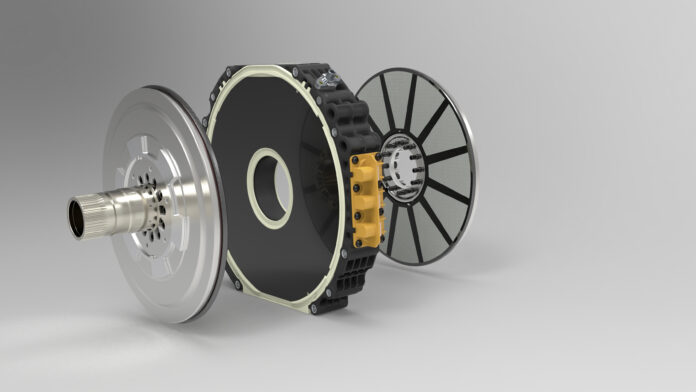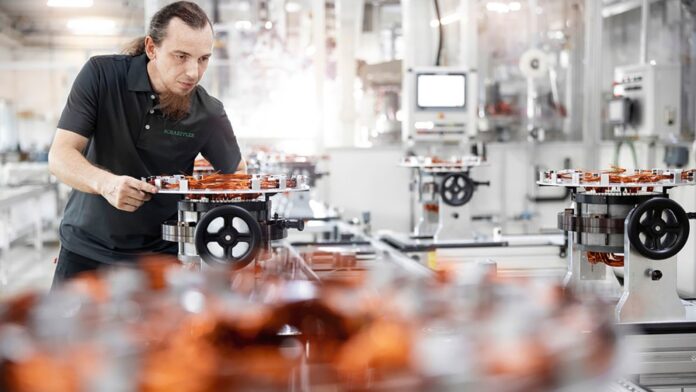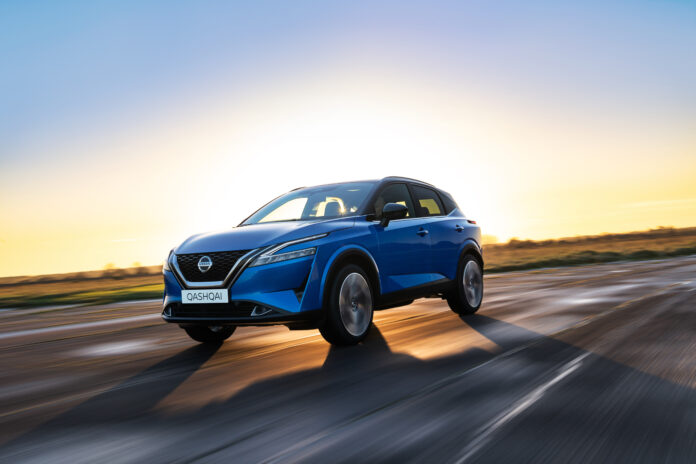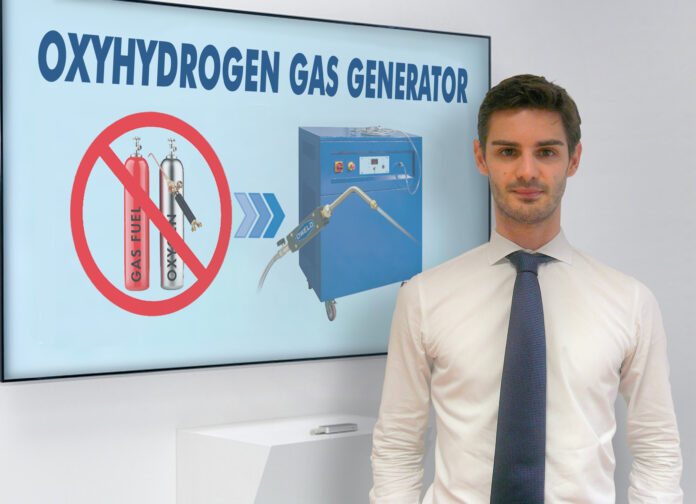Copper, material typically used for the windings of conventional electric motors, is more expensive and heavier than aluminium. For this reason as well, they have started the first experimentations of aluminium windings for electric motors, expected to replace a fundamental role, that is to say generating the electromagnetic field for the rotor.
Concerning this, protagonist is the British company Ricardo, which has started developing electric motors with aluminium windings intended for small-size electric cars.
Ricardo has been developing a rare-earth magnet-free sustainable electric motor concept with aluminium stator windings, which retains the key attributes of magnet-rich motors. The goal has been to create technology which is robust, costs less than current products and reduces lifecycle impact by eliminating the use of scarce resources for example up to 12kg of rare earth metals and also high acidification materials such as copper without impacting motor function or quality.
Therefore, aluminium is no longer used just for the bars of induction motors thanks to UK-Alumotor, led by Ricardo with Aspire Engineering, Brandauer, Warwick Manufacturing Group at The University of Warwick, Phoenix Scientific Industries, and Global Technologies Racing, is a consortium of experts formed to develop a supply chain around an innovative proprietary design for an electric motor.
The consortium’s aim is to grow UK manufacturing capability and to develop the next generation of skilled engineers and technicians.
UK-Alumotor consortium has received an award from Driving Electric Revolution Challenge fund – through UK Research and Innovation – to establish a UK supply chain for electric machines: leveraging manufacturing expertise to deliver next generation sustainable electric motors.
Aluminium windings?
Schaeffler, flexible production of electric motors
Among the latest news by Schaeffler there is the release of AgiloDrive2 research project funded by the German Federal Ministry for Economic Affairs and Energy (BMWi). The aim of the three-year project is to develop an agile and digitalized production system complete with modular product concept for innovative electric motors.
The aim is a seamless and fast transfer of the findings from AgiloDrive2 to electric motor production at the Bühl location – the headquarters of the Automotive Technologies Division – where a state-of-the-art, world-leading primary plant is currently under construction for electric motor production.
AgiloDrive2 project will also focus on ways of making electric motor production more flexible, sustainable, and financially compelling on the basis of data-based production technologies, agile process chains, and intelligent control architectures.
«Schaeffler is characterized by a high level of production experience in e-mobility. As consortium top player, we bring our long-standing expertise as a pioneer in e-mobility to the table and are driving the project forward decisively with strong partners. Digitalization and automation are key to the sustainable factory of the future and generate opportunities for us and our customers along the entire value chain».
AgiloDrive2 research project, with a three-year duration and total finance package of 33.7 million euros, is being funded by the German Federal Ministry for Economic Affairs and Energy (BMWi), within the framework of the funding guideline “Digitalization of vehicle manufacturers and supplier industry,” and is supported by the project sponsor VDI Technologiezentrum GmbH.
The flying car is closer and closer: green light to fly
It had accomplished its first flight in Slovakia in July 2021 and recent days it has obtained the certificate of airworthiness. We are speaking of AirCar by Klein Vision, the flying car that might be soon produced on a large scale.
Fitness to fly was awarded by the Slovak Transport Authority, in line with the standards defined by the European Aviation Safety Agency (Aesa).
How has it achieved it? The vehicle was subjected to severe controls and operations for a total amount of 70 flight hours and more than 200 take-offs and landings.
AirCar joins the shapes of a conventional car with those of a ultralight and to shift from standard car to flying car takes just three minutes.
The electric motor that enables all this is a 160 horsepower BMW engine, combined with a propeller behind the cockpit and a ballistic parachute. It seems that the company is already working on the construction of an engine with a monocoque vehicle with variable pitch propeller that should reach speeds exceeding 300 km/h and an autonomy of 1,000 km.
The market has new electric super-motors: Benevelli the manufacturer
Alessandro Benevelli, CCO of Benevelli Modena company, through a post on LinkedIn, has announced the release of the new high-performance electric motors for the mobility sector.
The development of the new SMAC Series 270 came as response of a growing electrification need.
It is in fact a line of ideal IPM electric motors for eMobility and Off-Highway, engineered to be compact, lightweight and power dense for use in high-performance traction, power generation, electrohydraulic systems and other specialized high-power applications.
The new SMAC Serie 270 is a range of electric motors rated 30 to 200 kW, available in voltages from 48 to 800 V. The series, which is based on a 270 mm diameter stator, incorporates four different motor lengths with 24 winding configurations to accommodate various power classes. The motors are also available in air- and liquid-cooled configurations and IP6K9K protection is available.
Benevelli, on the other hand, is a historical company in the world of the e-valley: «This year, we turn 60 and we have been involved in electric mobility for more than 20 years, so we perfectly understand the requirements of electric drivetrains – said Chief Operating Officer Alessandro Benevelli – whose company also produces transaxles, wheel drives and other electric motor types. Our modular product portfolio enables us to offer tailored mass-production solutions to meet any customer requirement».
The first electric motor signed by Yamaha
It is recent the news that Yamaha Motor will supply Subaru Tecnica International Inc. (STI) with electric motor units for their STI E-RA EV that STI is developing for future motorsport.
The electric 350 kW motor by Yamaha was in fact protagonist of a test on board of the hypercar Subaru STI E-RA EV.
Featuring a power of as many as 469 HP, Yamaha has developed the motor specifically thinking of the next generation of electric cars and it has designed a compact motor, equipped with cooling system and to be coupled with more units on the same vehicle.
Subaru vehicle that is protagonist of the test was equipped with four STI E-RA EV motors for an overall power of 800 kW that in 2023 aims at surpassing the lap time of 6 minutes and 40 seconds of the famous German Nurburgring track.
The investments by Mercedes for axial-flux motors

Last summer, Mercedes took over Yasa, British company that produces axial-flux motors. Recent news reveal that the Berlin factory is planning to widen its plant to host a new production line intended for Yasa motors, super-compact and super-efficient units. Works will be accomplished in six years and need an investment exceeding 100 million Euros. Moreover, the work opportunity was seized on the fly also to build the Digital Factory Campus, a structure intended for the development and optimization of new software applications in the ambit of the MO360 programme: pioneering technologies already in advanced implementation phase that in 2022 will start the pre-production.
These last moves clearly show that the Berlin structure for Mercedes is a real focus centre for its digital systems and its electric powertrains.
Jorg Burzer from Mercedes, declared: «The transformation of the automotive industry is more evident in our Berlin site than in any other Mercedes-Benz factory. The shifting from a production site for conventional drive components into a competence centre for the digitalization and the production in the electric mobility field is a significant step for us. With the production of high-performance electric motors, Berlin factory will become a fundamental pillar of the sustainable electrification strategy by Mercedes-Benz».
Silicon carbide chips, Bosch direction
After a development lasted several years, Bosch is starting the mass-production of silicon carbide power semiconductors (SiC).
Small, powerful and extremely efficient, chips will be increasingly used in new vehicles. Bosch, in fact, will supply silicon carbide power semiconductors to customers worldwide, both under the form of single chips and mounted in power electronics or complete solutions such as eAxle. Designed to be efficient, the overall system formed by electric motor, gearbox and power electronics allows obtaining a maximum 96% efficiency degree.
Harald Kröger, member of the Board, stated: «Concerning silicon carbide semiconductors, a bright future is looming. We aim at becoming world leaders in the mass production of these indispensable components for electric mobility».
To supply on a large scale SiC chips, Bosch has developed its own highly complex manufacturing process.
The demand for powerful silicon carbide semiconductors is rising worldwide. The market research and consulting company Yole estimates that every year the entire SiC market will score an average 30% growth until 2025, reaching 2.5 billion dollars. Let us go more into technical details: the secret of the performances of SiC chips is a tiny carbon atom that is integrated into the high-purity silicon crystalline structure, generally used for the production of semiconductors, conferring particular physical features to the matter.
Nissan and its award-winning e-patent
Nissan patent for electrified mobility has won the Green Prix 2021 award assigned by No Smog Mobility, the exhibition dedicated to “eco-sustainable ideas and solutions”.
The prize acknowledges the exclusivity of Nissan e-Power technology: a system consisting of an electric motor that drives wheels and of a thermal motor that supplies energy to the battery.
The result is a driving experience like electric vehicles’, with instantaneous acceleration and silence, joined by low emissions and low consumptions. For over three years, this technology has already been used in Japan, where it is meeting a great success, and in 2022 it will arrive also in Europe, on the new Qashqai e X-Trail.
The upgrading of the range and innovative technologies pursues the direction of reaching the targets of 75% of sales with electrified cars by 2023 in Europe and the offer of new fully electrified models by 2030.
With an investment of one billion pounds in Sunderland plant and the creation of 6,200 workplaces, EV36Zero industrial plan focuses on the entire manufacturing chain.
The project provides, in fact, for the release of a new electric crossover, a new Gigafactory to produce state-of-the-art batteries and a Microgrid of renewable energy to power the site production. Besides the e-POWER, Nissan product range will also focus on other electrification technologies, such as e-Pedal and e-4ORCE. The first makes driving safer and less stressing, due to the only pedal that manages each driving phase, while the second corresponds to a system with two electric motors, one for each axle, and a sophisticated management system of the independent wheel drive.
Vitesco Technologies and the two-wheel electrification
They are clearly focusing on electrification in the two-wheel sector, too. Vitesco Technologies has recently presented a broad array of innovations, from purely electric drive systems for light motorbikes and scooters, to the demo version of a hybrid motorbike and other electrification solutions. The 48-volt system is designed for a power range from 3 to 7 kW and then it constitutes the electrified equivalent of small two-wheel motor vehicles in the class up to 150 cc of displacement.
The company presupposes that hybrid solutions will play an important role in a transition phase for bigger bikes, since it will not be possible to reach the future limits of CO2 only by means of solutions adopted for the combustion engine. Vitesco prototype is equipped with a 48-volt standard belt-driven starter generator coming from the automotive industry, where, already since 2016, the company has used the hybrid 48-volt drive. The starter generator also allows travelling on short distances in purely electric modality, especially in the city traffic and in zero-emission areas.
Brazing toward 4.0 technology
The company Oxyweld, Italian manufacturer and pioneer of oxyhydrogen gas generators for brazing, has always been focused on the latest technological innovations. Now, with its Oweld brand, the company is introducing a new and modern series of gas generators suitable for industry 4.0.
We are talking about the entire range of oxyhydrogen gas generators “HD” and the possibility to implement them with the Industry 4.0.
Diego Andreetta, Oxyweld sales Director said «The system allows a complete control of the brazing activity thanks to the possibility to plan the daily activities or every single lot of production, by inserting the start time of any activity to optimize the resources and eliminate waste of time. The software supplied sends data and feedback in real time to a screen, for a smarter factory».









